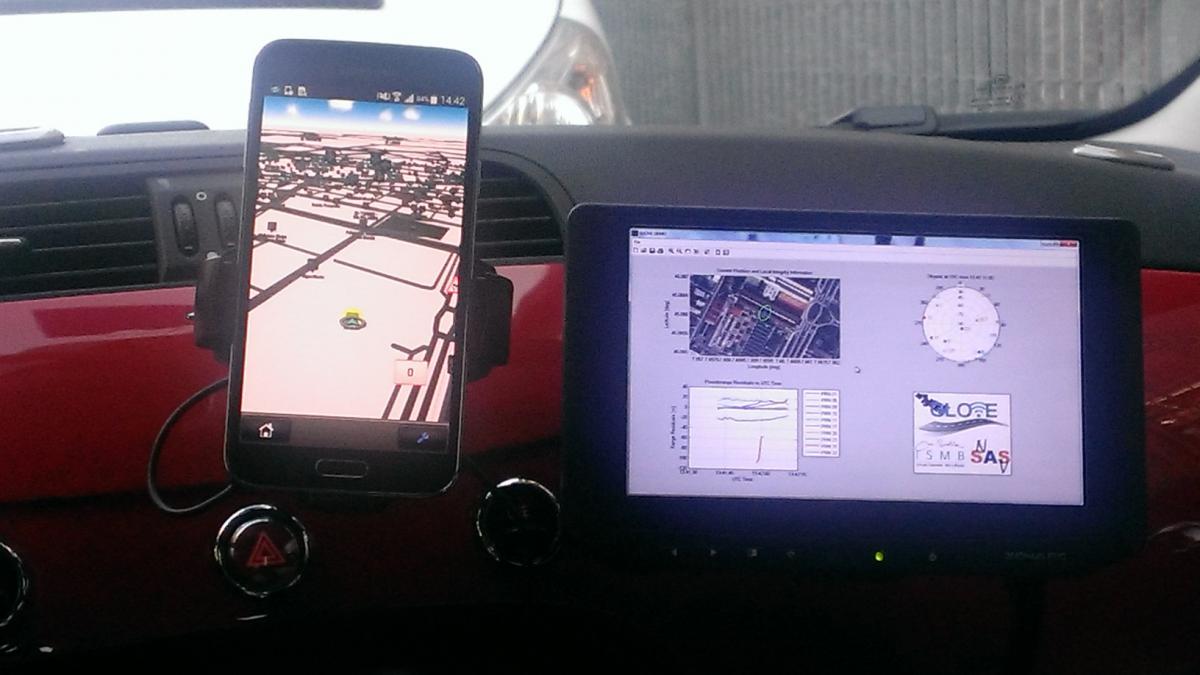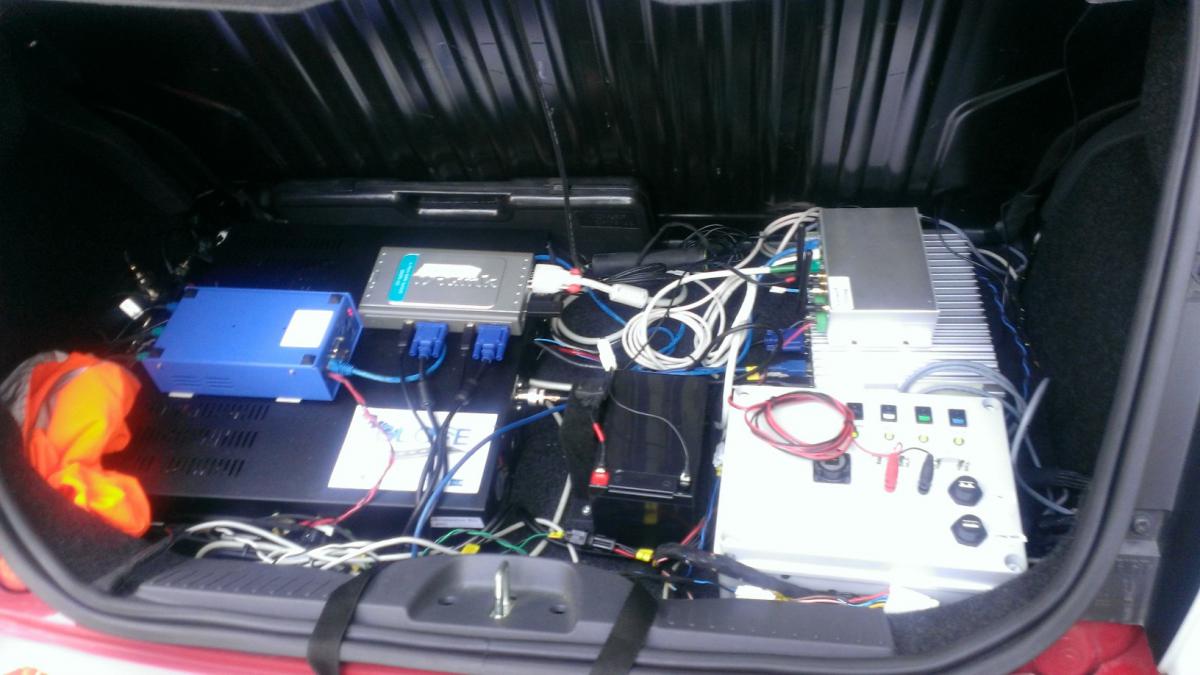By combining GNSS and EGNOS augmented positioning with airborne inertial measurements and a global gravity model, also derived from space-based technology, the Galileo for Gravity project is developing an accurate, cost effective gravimetry surveying service. This has tremendous potential for enhancing activities such as mineral prospecting and a wide range of other commercial and academic applications.
 We tend to think of the force of gravity as a constant, but in reality it varies depending upon your global position and the composition of the Earth under your feet. The acceleration due to gravity varies from a minimum of 9.788 m/sec2 at the equator to a maximum of 9.838 m/sec2 at the poles.
We tend to think of the force of gravity as a constant, but in reality it varies depending upon your global position and the composition of the Earth under your feet. The acceleration due to gravity varies from a minimum of 9.788 m/sec2 at the equator to a maximum of 9.838 m/sec2 at the poles.
The accurate, high resolution measurement of gravity is of great scientific and public interest. Airborne gravimetry is considered the most efficient method to obtain such data and the Galileo for Gravity (GAL) project is studying and developing a state-of the–art methodology for determining precise, high-resolution gravity field models.
The GAL project is funded by the European Commission under FP7 and managed by the European GNSS Agency (GSA). Its aim is to refine and reduce the cost of airborne techniques by integrating accurate GNSS positioning into the measurement process.
Current stand-alone airborne gravimetry provides an aircraft trajectory with 20 – 30 centimetre accuracy which in turn leads to a gravity resolution of less than 10Gal. A Gal is a unit of acceleration equal to one centimetre per second squared (cm/sec2).
“This performance can be improved by use of local elements – terrestrial augmentation systems for positioning – but the GAL project should be able to achieve improved gravity accuracy of a few mGal or less on spatial scales of less than 10 kilometres anywhere without the need for expensive ground infrastructure,” explains Angelo Amodio of project coordinator Galileian Plus. “And our preliminary tests using simulated Galileo data are already giving us this order of performance without the use of local elements.”
 Improved accuracyAt the heart of the project is precise Kinetic Airborne Gravimetry (KAG). This technique combines the use of inertial measurements units (IMUs) on surveying aircraft with highly accurate satellite positioning data using GPS, EGNOS signals and, in the future, Galileo.
Improved accuracyAt the heart of the project is precise Kinetic Airborne Gravimetry (KAG). This technique combines the use of inertial measurements units (IMUs) on surveying aircraft with highly accurate satellite positioning data using GPS, EGNOS signals and, in the future, Galileo.
This data is then further integrated with the global models being developed from the gravity field and steady-state Ocean Circulation Explorer (GOCE). The GOCE satellite was launched by the European Space Agency (ESA) in March 2009 and was effectively the first seismometer to be put into orbit. The craft contains six accelerometers that are 100 times more sensitive than any previously flown in space.
The GAL concept combines the GOCE satellite global gravity models with KAG-derived local models. The GOCE data resolves the gravity field with an accuracy of 1-2 mGal and a geoid accuracy level of 1 – 2 cm at 100 km distances and longer. In comparison KAG will resolve, with similar accuracy, the gravity field at distance resolutions ranging from 200 to one kilometre. The spectral overlap between the two systems’ resolutions provides consistency between the two data sets and will allow a consistent calibration of the KAG system to a truly global reference frame.
“Previously the noise related to GPS-derived accelerations has limited the operational exploitation of KAG techniques, but the enhanced robustness of EGNOS augmented signals and the high accuracy to be provided by the future Galileo constellation means that the realisation of the power of KAG is now possible,” says Angelo.
Prospecting success
Once GAL starts to be fully operational, it will eliminate the need for expensive large-scale terrestrial gravity measurements and allow affordable gravity missions over the Earth’s whole land mass. This will yield high resolution gravity field determinations and, more specifically, high resolution geoid determination – which in itself is an enabler for better GNSS accuracy.
“The GAL system can be easily deployed in remote regions, over desserts and oceans where ground infrastructure cannot be deployed. This is important for private institutions that want gravity accuracy for activities such as surveying or prospecting for minerals,” concludes Angelo. “Other research applications include determination of the geoid, fundamental gravity knowledge, the understanding of anomalies, oceanography and geodynamics. There is a diverse range of applications, both commercial and academic, that require the sort of information that GAL can deliver.”
What is the Geoid?
The Geoid is defined as the equipotential surface of the Earth’s gravity field which best fits – in a least squares sense - global mean sea level. In oceanographic terms it is the shape that the surface of the ocean would take under the influence of gravity alone. Although the Earth’s actual surface varies in height from +8 000 metres (Mount Everest) to -11 000 metres (Mariana Trench) the shape of the Geoid only varies from -106 to + 85 metres compared to a perfect mathematical ellipsoid.
Media note: This feature can be republished without charge provided the European GNSS Agency (GSA) is acknowledged as the source at the top or the bottom of the story. You must request permission before you use any of the photographs on the site. If you republish, we would be grateful if you could link back to the GSA website.
More information: